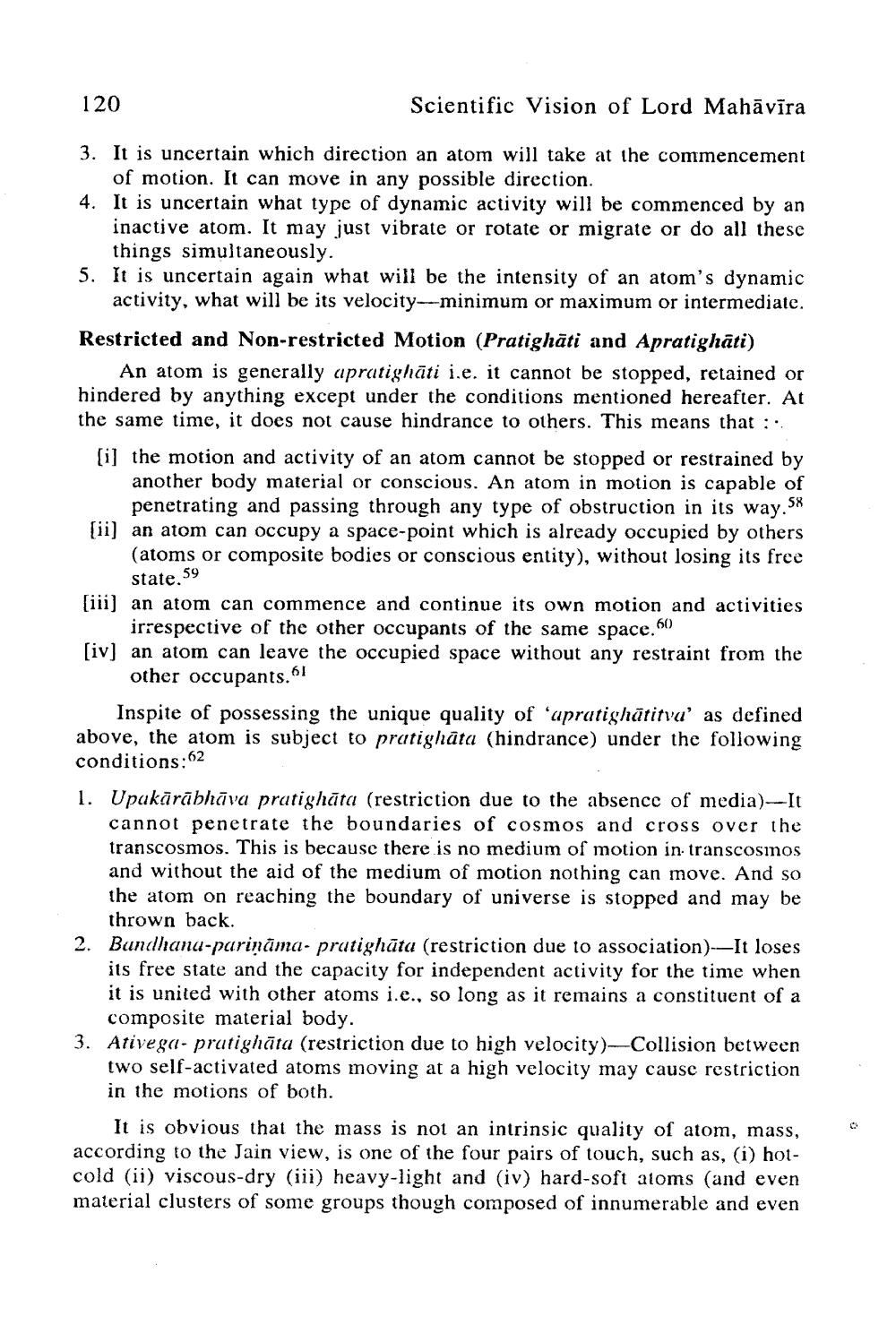________________
Scientific Vision of Lord Mahāvīra
3. It is uncertain which direction an atom will take at the commencement
of motion. It can move in any possible direction.
4. It is uncertain what type of dynamic activity will be commenced by an inactive atom. It may just vibrate or rotate or migrate or do all these things simultaneously.
5. It is uncertain again what will be the intensity of an atom's dynamic activity, what will be its velocity-minimum or maximum or intermediate. Restricted and Non-restricted Motion (Pratighati and Apratighāti)
120
An atom is generally apratighāti i.e. it cannot be stopped, retained or hindered by anything except under the conditions mentioned hereafter. At the same time, it does not cause hindrance to others. This means that
[i] the motion and activity of an atom cannot be stopped or restrained by another body material or conscious. An atom in motion is capable of penetrating and passing through any type of obstruction in its way.58 [ii] an atom can occupy a space-point which is already occupied by others (atoms or composite bodies or conscious entity), without losing its free state. 59
[iii] an atom can commence and continue its own motion and activities irrespective of the other occupants of the same space."
60
[iv] an atom can leave the occupied space without any restraint from the
other occupants." 61
Inspite of possessing the unique quality of 'apratighātitva' as defined above, the atom is subject to pratighāta (hindrance) under the following conditions:62
1. Upakārābhāva pratighāta (restriction due to the absence of media)-It cannot penetrate the boundaries of cosmos and cross over the transcosmos. This is because there is no medium of motion in transcosmos and without the aid of the medium of motion nothing can move. And so the atom on reaching the boundary of universe is stopped and may be thrown back.
2. Bandhana-pariņāma- pratighāta (restriction due to association)-—It loses its free state and the capacity for independent activity for the time when it is united with other atoms i.e., so long as it remains a constituent of a composite material body.
3. Ativega- pratighāta (restriction due to high velocity)-Collision between two self-activated atoms moving at a high velocity may cause restriction in the motions of both.
It is obvious that the mass is not an intrinsic quality of atom, mass, according to the Jain view, is one of the four pairs of touch, such as, (i) hotcold (ii) viscous-dry (iii) heavy-light and (iv) hard-soft atoms (and even material clusters of some groups though composed of innumerable and even




